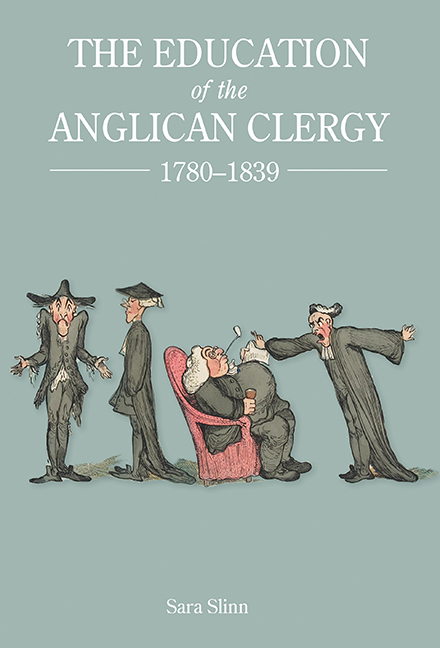Book contents
- Frontmatter
- Contents
- Illustrations
- Acknowledgements
- Abbreviations
- Introduction
- Part One Entrants to the Clerical Profession, 1780–1839
- Part Two Routes to Ordination
- Conclusion
- Appendix 1 Ordination Profiles of Bishops, 1780–1839
- Appendix 2 A Note on Methodology
- Bibliography
- Index
- Miscellaneous Endmatter
Introduction
Published online by Cambridge University Press: 30 August 2017
- Frontmatter
- Contents
- Illustrations
- Acknowledgements
- Abbreviations
- Introduction
- Part One Entrants to the Clerical Profession, 1780–1839
- Part Two Routes to Ordination
- Conclusion
- Appendix 1 Ordination Profiles of Bishops, 1780–1839
- Appendix 2 A Note on Methodology
- Bibliography
- Index
- Miscellaneous Endmatter
Summary
Offered here is the largest historical study of recruitment to the ministry of the Church of England attempted to date. It takes as its focus the educational backgrounds of men ordained in the late Hanoverian period, from 1780 to 1839 – a period during which the path to the pulpits and parishes of the Established Church was not quite as straightforward as has often been assumed. Certainly a ‘liberal’ or classical education, followed by university, was the most judicious way forward. Oxford fellow, clerical schoolmaster and essayist, Vicesimus Knox, gave this advice in 1782: ‘To facilitate the tenure of some preferments, and to satisfy the prejudices of the world, it will be necessary to take academical degrees. This cannot reputably be done without becoming a member of an English university.’ But Knox's choice of words is telling. ‘Some’ preferments did indeed require a degree, but what about the young man who did not aspire to a deanery or even to hold in plurality? What about those prepared to disregard the ‘prejudices of the world’? And if the English universities were the reputable way into the Church, what about the less reputable routes? Knox's advice was excellent, but even he might disregard it: in 1805 he helped his assistant, John Oxlee, to take orders, although Oxlee had never attended university.
Throughout the period of this study it was possible to describe a man as having been educated for the Church, without necessarily suggesting that he had been intended for university. Parents might prepare a biddable, bookish son by giving him a classical education and maintaining him, without setting him to secular trade or business (school-keeping excepted), until he was of age to take orders. It would have been possible to point to non-graduate role models, both of national reputation and from within the local clergy. Amongst the more notable of such men were Bishop William Warburton; archdeacons Joseph Jefferson and Thomas Beynon; evangelical elder statesmen such as John Newton; the bible commentator Thomas Scott; and popular preachers Cornelius Bayley of Manchester and Robert Storry of Colchester.
The route to orders without a degree did, however, become progressively more difficult during this period.
- Type
- Chapter
- Information
- The Education of the Anglican Clergy, 1780–1839 , pp. 1 - 16Publisher: Boydell & BrewerPrint publication year: 2017

